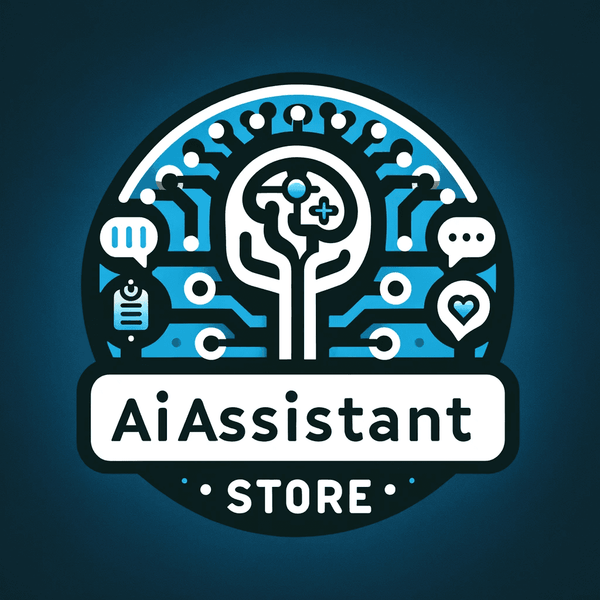If you’re a startup founder buried in way too many dashboards, or a data analyst stuck with spreadsheets that always seem to be lying (don’t they?), this guide’s for you. Let’s break down what actually makes these tools useful, and which ones might just save your business from a very expensive mistake.
Articles you may like to read after this one:
🔗 Data science and artificial intelligence future
Explores how AI and data science shape innovation trends.
🔗 Best B2B AI tools for operations
Top tools enhancing business efficiency with intelligence.
🔗 Top AI cloud business platform tools
A curated list of leading AI cloud management tools.
🌟 What Makes AI Business Intelligence Tools Actually Good?
Not all BI tools are equal, no matter how slick the demo looks. The ones worth your time usually hit a few critical marks:
-
Predictive insights: Goes beyond “what happened” and nudges toward “what’s next” - things like pipeline changes, churn likelihood, even inventory patterns. (But remember: bad data in = shaky predictions out. No tool magically fixes that. [5])
-
Natural language querying (NLQ): Lets you ask questions the way you talk, instead of pretending you’re a SQL robot. Power users like it, casual users finally use it. [1][2]
-
Data integration: Pulls from all your sources - CRMs, warehouses, finance apps - so your “single source of truth” isn’t just a buzzword on a sales slide.
-
Automated reporting & actions: From scheduled reports to workflow automations that actually trigger tasks. [4]
-
Scalability & governance: The boring stuff (models, permissions, lineage) that prevents everything from collapsing once more teams join in.
-
Low-friction UX: If you need a three-week bootcamp, adoption will flop.
Mini-glossary (in plain English):
-
Semantic model: basically the translator layer that converts messy tables into business-ready terms (like “Active Customer”).
-
LLM assist: AI that drafts insights, explains charts, or builds a rough report from a single prompt. [1][3]
📊 Comparison Table: Top AI Business Intelligence Tools
| Tool | Best For | Price | Why It Works |
|---|---|---|---|
| Tableau AI | Analysts & Execs | $$$$ | Visual storytelling + AI summaries (Pulse) [3] |
| Power BI + Copilot | MS Ecosystem Users | $$ | Strong NLQ + prompt-built visuals [1] |
| ThoughtSpot | Search-driven users | $$$ | Ask questions, get charts - search-first UX [2] |
| Looker (Google) | Big data lovers | $$$ | Deep pairing with BigQuery; scalable modeling [3][4] |
| Sisense | Product & Ops Teams | $$ | Known for embedding inside apps |
| Qlik Sense | Mid-market companies | $$$ | Automation to move from insight → action [4] |
(Prices vary wildly - some enterprise quotes are… eye-opening, to say the least.)
🔎 The Rise of NLQ in BI: Why It’s a Game-Changer
With NLQ, someone in marketing can literally type, “Which campaigns increased ROI last quarter?” and get a clean answer - no pivot tables, no SQL headaches. Tools like Power BI Copilot and ThoughtSpot lead the charge here, turning plain English into queries and visuals. [1][2]
💡 Quick tip: Treat prompts like mini-briefs: metric + time + segment + comparison (e.g., “Show paid social CAC vs. organic by region, Q2 vs. Q1”). The better the context, the sharper the result.
🚀 Predictive Analytics: Seeing the Future (Sorta)
The best BI tools don’t stop at “what happened.” They make stabs at “what’s coming”:
-
Churn predictions
-
Pipeline health forecasts
-
Inventory windows before stockouts
-
Customer or market sentiment
Tableau Pulse summarizes KPI drivers automatically, while Looker works neatly with BigQuery/BI Engine and BQML for scale. [3][4] But - honestly - predictions are only as solid as your inputs. If your pipeline data is a mess, your forecasts will be laughable. [5]
📁 Data Integration: The Hidden Hero
Most companies live in silos: CRM says one thing, finance says another, product analytics is off in its own corner. True BI tools break those walls:
-
Near real-time syncs between core systems
-
Shared metrics across departments
-
One governance layer so “ARR” doesn’t mean three different things
It’s not flashy, but without integration, you’re just making fancy guesses.
📓 Embedded BI: Bringing Analytics to the Frontlines
Imagine if insights just lived where you worked - in your CRM, support desk, or app. That’s embedded BI. Sisense and Qlik stand out here, helping teams build analytics right into daily workflows. [4]
📈 Dashboards vs. Auto-Generated Reports
Some execs want the full control - filters, colors, pixel-perfect dashboards. Others just want a PDF summary in their inbox every Monday morning.
Luckily, AI BI tools now cover both ends:
-
Power BI & Tableau = dashboard heavyweights (with NLQ/LLM helpers). [1][3]
-
Looker = polished modeling plus scheduled delivery at scale. [4]
-
ThoughtSpot = ask-and-you-shall-receive instant charting. [2]
Pick whichever matches how your team actually consumes data - otherwise, you’ll build dashboards nobody opens.
🧪 How to Choose (Fast): A 7-Question Scorecard
Give each question 0–2 points:
-
NLQ simple enough for non-analysts? [1][2]
-
Predictive features with explainable drivers? [3]
-
Fits your warehouse (Snowflake, BigQuery, Fabric, etc.)? [4]
-
Governance solid (lineage, security, definitions)?
-
Embedded where work actually happens? [4]
-
Can automation jump from alert → action? [4]
-
Setup/maintenance overhead tolerable for your team size?
👉 Example: A 40-person SaaS company scores high on NLQ, warehouse fit, and automation. They pilot two tools against one KPI (e.g., “Net new ARR”) for two weeks. Whichever one surfaces a decision they actually act on - that’s the keeper.
🧯 Risks & Reality Checks (Before You Buy)
-
Data quality & bias: Bad or stale data = bad insights. Lock down definitions early. [5]
-
Explainability: If the system can’t show drivers (the “why”), treat forecasts as hints.
-
Governance drift: Keep metric definitions tight, or NLQ answers the wrong version of “MRR.”
-
Change management: Adoption trumps features. Celebrate quick wins to drive usage.
📆 Is AI BI Overkill for Small Teams?
Not always. Tools like Power BI or Looker Studio are affordable enough and come with AI helpers that let small teams punch above their weight. [1][4] The catch: don’t pick a platform that needs a dedicated admin unless you actually have one.
AI BI Isn’t Optional Anymore
If you’re still stuck in manual spreadsheets or outdated dashboards, you’re behind. AI BI isn’t about speed alone - it’s about clarity. And clarity, honestly, is a kind of currency in business.
Start small, document your metrics, pilot one or two KPIs, and let AI cut through the noise so you can make decisions that matter. ✨
References
-
Microsoft Learn – Copilot in Power BI (Capabilities & NLQ) — https://learn.microsoft.com/en-us/power-bi/create-reports/copilot-introduction
-
ThoughtSpot – Search Data (NLQ/Search-Driven Analytics) — https://www.thoughtspot.com/product/search
-
Tableau Help – About Tableau Pulse (AI summaries, Einstein trust layer) — https://help.tableau.com/current/online/en-us/pulse_intro.htm
-
Google Cloud – Analyze data with BI Engine and Looker (BigQuery/Looker integration) — https://cloud.google.com/bigquery/docs/looker
-
NIST – AI Risk Management Framework 1.0 (Data quality & bias risks) — https://nvlpubs.nist.gov/nistpubs/ai/nist.ai.100-1.pdf

